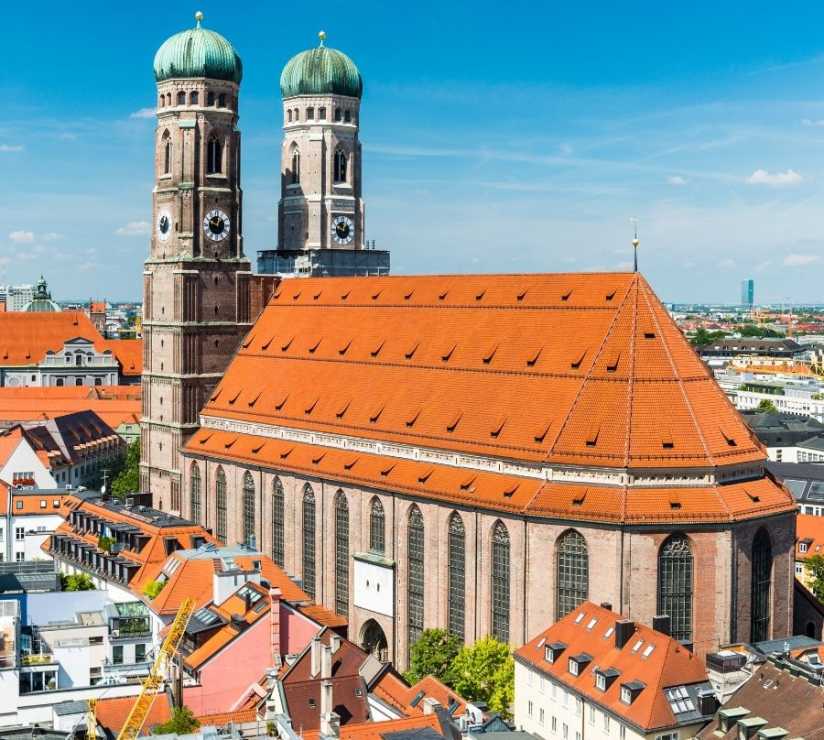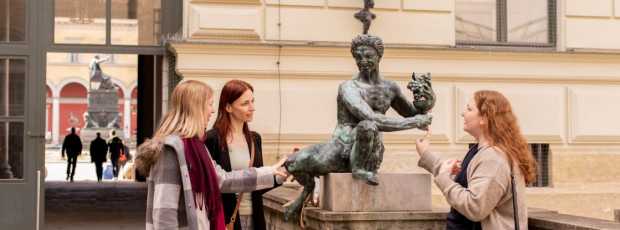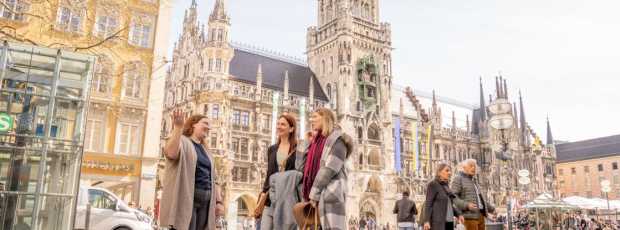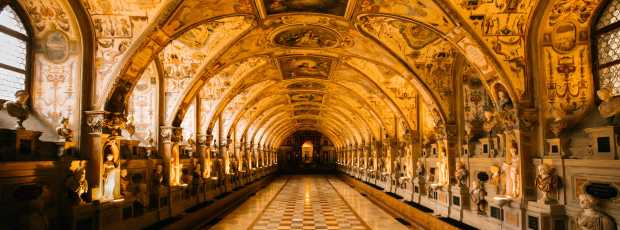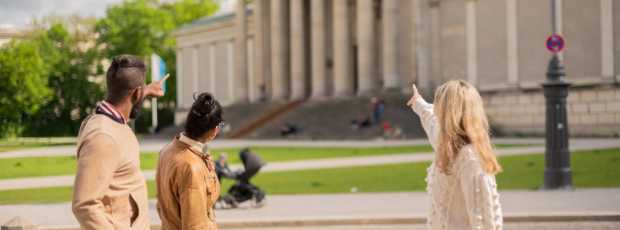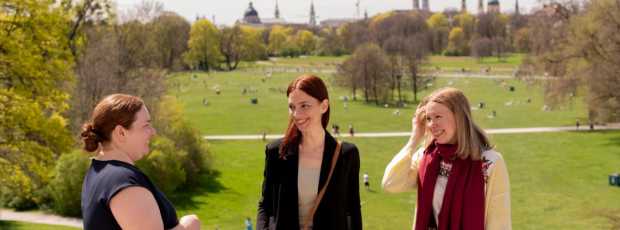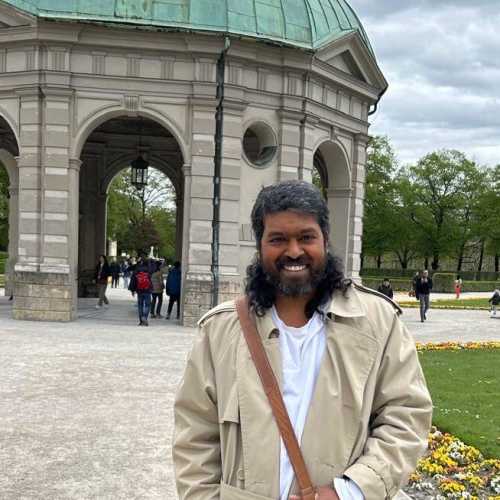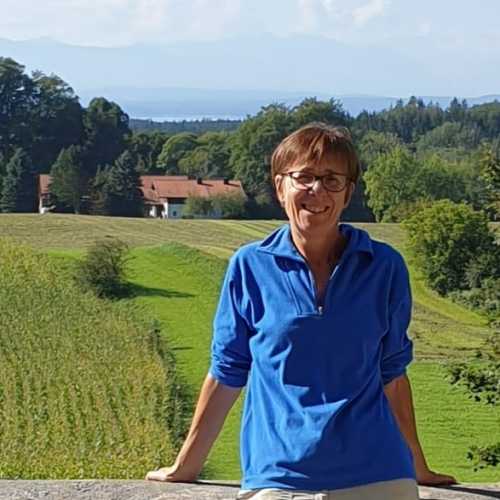Table Of Contents
- Where to Start? The City Centre and Its Icons
- From the City's Rooftops, The Best Views of Munich
- Green Escapes: The English Garden and Beyond
- A Journey Through Munich's Museums
- Where Munich's Life Unfolds — Vibrant Squares and Hidden Streets
- A Taste of Bavaria: Beer, Food & Festivals
- The Olympic Legacy: Olympic Park and Stadium
- Urban Cool: BMW Welt, Allianz Arena & Contemporary Highlights
- Where Munich Breathes: Royal Gardens and Riverside Walks
- What Not to Miss — But How to Do It Right
I've lived in Munich my entire life, and I'm tired of reading the same recycled lists about our city's attractions. You know the ones, they mention the same five places everyone already knows about, written by someone who spent a weekend here once.
This isn't that kind of guide. I'm going to tell you about Munich attractions the way someone who actually lives here would, mixing the essential stops with the places we locals actually go. No Instagram filter, no tourist trap recommendations, just honest insights from someone who's walked these streets for decades.
You'll get the iconic sights, sure, but also the corners of the city where Munich actually breathes. The spots where you'll understand why we're so annoyingly proud of this place.
Where to Start? The City Centre and Its Icons
The old town is unavoidable, and honestly, you shouldn't avoid it. Yes, it's packed with tourists snapping photos of the Neue Rathaus, but there's a reason people flock here. The town hall's Gothic Revival facade is genuinely impressive, especially when you catch the Glockenspiel at 11 AM or noon.
Max Joseph Platz right next door gives you breathing room and some of the best people-watching in the city. I've spent countless lunch breaks here watching street performers work the crowd and tourists figure out which direction leads where.
The trick with the city center is timing. Early morning or late afternoon, when the tour groups thin out, you'll actually hear the bells and notice the architectural details. The cobblestones tell stories if you're not rushing to the next photo op.
Bottom line: Start here, but don't end here. The old town introduces Munich, but it doesn't define it.
From the City's Rooftops, The Best Views of Munich
Want to see Munich the way locals see it? Climb Alter Peter. Everyone calls it Old Peter, and the 299 steps to the top will remind you why Munich beer gardens exist — you'll need that beer afterward.
The view from Alter Peter beats any postcard. You'll see the Alps on clear days, but more importantly, you'll understand Munich's layout. The green patches of the English Garden, the sprawl toward the suburbs, the way historic and modern architecture blend together.
I bring visitors here because it's the quickest way to show them Munich isn't just lederhosen and beer halls. From up there, you see a living, breathing European city that happens to have incredible traditions.
Local tip: The view puts Munich's attractions in perspective — literally and figuratively.
Looking for a private city experience in Munich?
Explore the city with a local who plans a private day just for you; no groups, no scripts.
Green Escapes: The English Garden and Beyond
The English Garden is bigger than Central Park, and I'll fight anyone who claims their city park is better. This isn't just tourist marketing, it's where Munich actually happens on sunny days.
Forget the obvious spots near the Haus der Kunst. Head deeper into the park, toward the Isar River, where locals spread blankets and pretend to read while actually napping in the sun. The river offers swimming spots that'll shock visitors, yes, we swim in the city, and yes, the water is cold enough to wake the dead.
The Eisbach wave draws surfers year-round, creating one of Munich's most surreal sights. Urban surfing in Bavaria — because why should cities near oceans have all the fun?
Summary: The English Garden proves Munich mastered work-life balance centuries before it became a corporate buzzword.
A Journey Through Munich's Museums
The Deutsches Museum should be terrible, a massive technical museum sounds like punishment. Instead, it's fascinating, even for people who think engineering is boring. The exhibits actually work, the demonstrations don't talk down to you, and you'll spend hours without realizing it.
The Jewish Museum tells Munich's story honestly, including the parts we'd rather forget. It's essential for understanding the city beyond its postcard image. The architecture alone — that geometric facade — makes a statement about confronting history head-on.
Art lovers should skip the Pinakothek crowds and explore smaller museums. They're quieter, less overwhelming, and often more rewarding than fighting through tour groups for a glimpse of famous paintings.
Museums matter: They reveal Munich's intellectual side that gets overshadowed by beer hall stereotypes.
Where Munich's Life Unfolds — Vibrant Squares and Hidden Streets
The real Munich happens away from Marienplatz, in squares most guidebooks ignore. Every district has its own square where locals grab coffee, kids play, and old men argue about football. These aren't attractions in the traditional sense — they're where the city actually lives.
I love showing visitors these neighborhood squares because they're confused at first. Where are the souvenir shops? Why isn't anyone taking selfies? That's exactly the point. Munich's authentic rhythm plays out in these ordinary spaces where people just exist without performing for cameras.
A simple stroll through residential streets reveals Munich's personality better than any museum. The mix of architectural styles, the careful urban planning, the way green spaces appear around every corner — it's urban design done right.
Real talk: Munich's charm lives in the spaces between the major attractions.
What if your day in Munich was planned by someone who knows it — and you?
City Unscripted matches you with a local host who creates a private experience based on your interests, not a set route.
A Taste of Bavaria: Beer, Food & Festivals
Every brewery tour in Munich claims to show you "authentic Bavarian culture," but most deliver tourist theater. The real beer culture happens in neighborhood gardens where regulars have claimed the same tables for decades.
Oktoberfest deserves its reputation, but locals experience it differently. We go early in the day, before the international party crowd arrives, when it feels more like a massive neighborhood festival than a tourist spectacle. The traditional music, the family atmosphere, the food that actually tastes good — that's the Oktoberfest worth experiencing.
Food markets throughout the city offer better insights into Bavarian cuisine than restaurants catering to tour groups. Local specialties that don't make international menus, seasonal ingredients, vendors who've been perfecting their craft for generations.
Food reality: Munich's culinary scene extends far beyond pretzels and sausages — though we do those exceptionally well.
The Olympic Legacy: Olympic Park and Stadium
The 1972 Olympics left Munich with spaces that still work fifty years later. Olympic Park isn't just a memorial to athletic achievement, it's where Munich hosts concerts, festivals, and events that matter to people who actually live here.
The Olympic Stadium's tent-like architecture was revolutionary when it was built, and it still looks futuristic today. Whether it's hosting a football match or a major concert, the space adapts beautifully to different events.
What I appreciate about the Olympic legacy is how it integrated into Munich's daily life. These aren't museum pieces — they're active parts of the city that serve current needs while honoring past achievements.
Olympic insight: Great architecture ages well when it's designed for people, not just prestige.
Urban Cool: BMW Welt, Allianz Arena & Contemporary Highlights
BMW Welt represents Munich's modern identity — innovative, precisely engineered, unapologetically confident. The building itself is worth visiting even if cars don't interest you. The architectural engineering is stunning, and the exhibits show how traditional German craftsmanship evolved into contemporary design excellence.
The Allianz Arena changes colors depending on which team is playing, turning football matches into citywide light shows. From certain angles around Munich, you can see it glowing on the horizon — a reminder that tradition and innovation coexist here.
These contemporary attractions prove Munich isn't stuck in the past. We honor tradition while embracing the future, creating spaces that serve both tourists and locals without compromising either experience.
Modern Munich: Innovation built on traditional foundations creates something uniquely Bavarian.
Tip
We match you with the right host, not just any guide.Want to experience the real Munich with someone who lives there?
A fully private experience, planned and led by a local host who tailors the day to you
Where Munich Breathes: Royal Gardens and Riverside Walks
The royal gardens throughout Munich offer escape from urban intensity without leaving the city. These aren't wild spaces — they're carefully designed landscapes that balance natural beauty with human accessibility.
Isar River walks provide linear parks that connect different parts of Munich while offering changing scenery. You can walk for kilometers along the river, passing through different neighborhoods and landscapes, never feeling trapped by urban density.
These green spaces matter because they give Munich residents and visitors permission to slow down. In a city that values efficiency and precision, having places where you can wander aimlessly becomes essential for mental health.
Green truth: Munich's parks aren't just pretty — they're functional spaces that make urban life sustainable.
What Not to Miss — But How to Do It Right
Balance is everything when exploring Munich attractions. Hit the famous spots, but don't let them define your entire experience. The city reveals itself gradually, through repeated encounters rather than single visits.
My advice? Start with the icons to get oriented, then follow your interests into the neighborhoods and lesser-known corners. Munich rewards curiosity and punishes rigid itineraries.
The best Munich experiences happen when you stop trying to check boxes and start paying attention to the city's actual rhythm. Whether you join Munich day tours or explore independently, remember that Munich's real attractions are the moments between the destinations.
Final wisdom: Munich's greatest attraction is the quality of life it offers — visitors can taste that lifestyle if they know where to look.
Ready to plan your perfect day in Munich?
Start your experienceWhat if your day in Munich was planned by someone who knows it — and you?
City Unscripted matches you with a local host who creates a private experience based on your interests, not a set route.
Want to experience the real Munich with someone who lives there?
A fully private experience, planned and led by a local host who tailors the day to you
